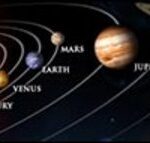In the 1960s and 1970s, most basic science classes taught that all matter was made of atoms. Atoms, in turn, were made of some combination of protons and neutrons, clustered in a nucleus, with electrons orbiting like planets in miniature solar systems. Each of these three particles was basic, and could not be broken down into anything smaller.
At about the same time, however, scientists determined that two of the three basic particles that students were familiar with were made up of even smaller particles called “quarks.” Protons are comprised of three quarks; two “up” quarks and one “down” quark. Neutrons are made of two “down” quarks and one “up” quark. An electron remained a basic particle by itself. It took many more years before this knowledge was verified experimentally and made it into the classroom.
Concurrently, a new theory of the composition of matter was being expanded and refined. Known as string theory, it suggested that particles are not tiny bits of solid material, but are actually made up of vibrating “strings” of energy. The frequency at which the string is vibrating determines what particle it manifests, somewhat like the vibration of a stringed instrument produces the specific note that is heard. Quarks are made up of strings. Strings, however, are not limited to being components of matter. Strings are also responsible for forces, like the nuclear forces and gravity, and are even responsible for causing a particle to have mass.
The mathematics of string theory is complicated, and requires more than just the three dimensions plus time that we experience in our daily lives. The most prevalent mathematical description of string theory holds that strings exist in an eleven dimension system. The dimensions we do not experience are thought to be curled up tightly and are not immediately detectable at the scale at which humans exist. The eleventh dimension is infinitely long and is referred to as a membrane or “brane.” The existence of branes is the primary basis for the theory of the multiple universes. There are potentially an infinite number of branes, with each brane being the basis of a universe. Branes exist separately but close to one another, undulating slightly like sheets hung together on old style clotheslines in a slight breeze.
Strings are either “open” or “closed.” Open strings have one end attached to a brane as they vibrate. The ends of closed strings are joined and are not bound to a brane. The string (and associated particle) that is responsible for gravity is a closed string and, remarkably, is thought to be able to pass from one brane (universe) to another.
Much of string theory is difficult to visualize and its implications are still being interpreted. It is difficult to imagine eleven dimensions, infinite branes, or how the vibration of a string of energy can cause apparently solid matter to exist. As often happens, however, the science involved is even more fascinating and intriguing than science fiction.


